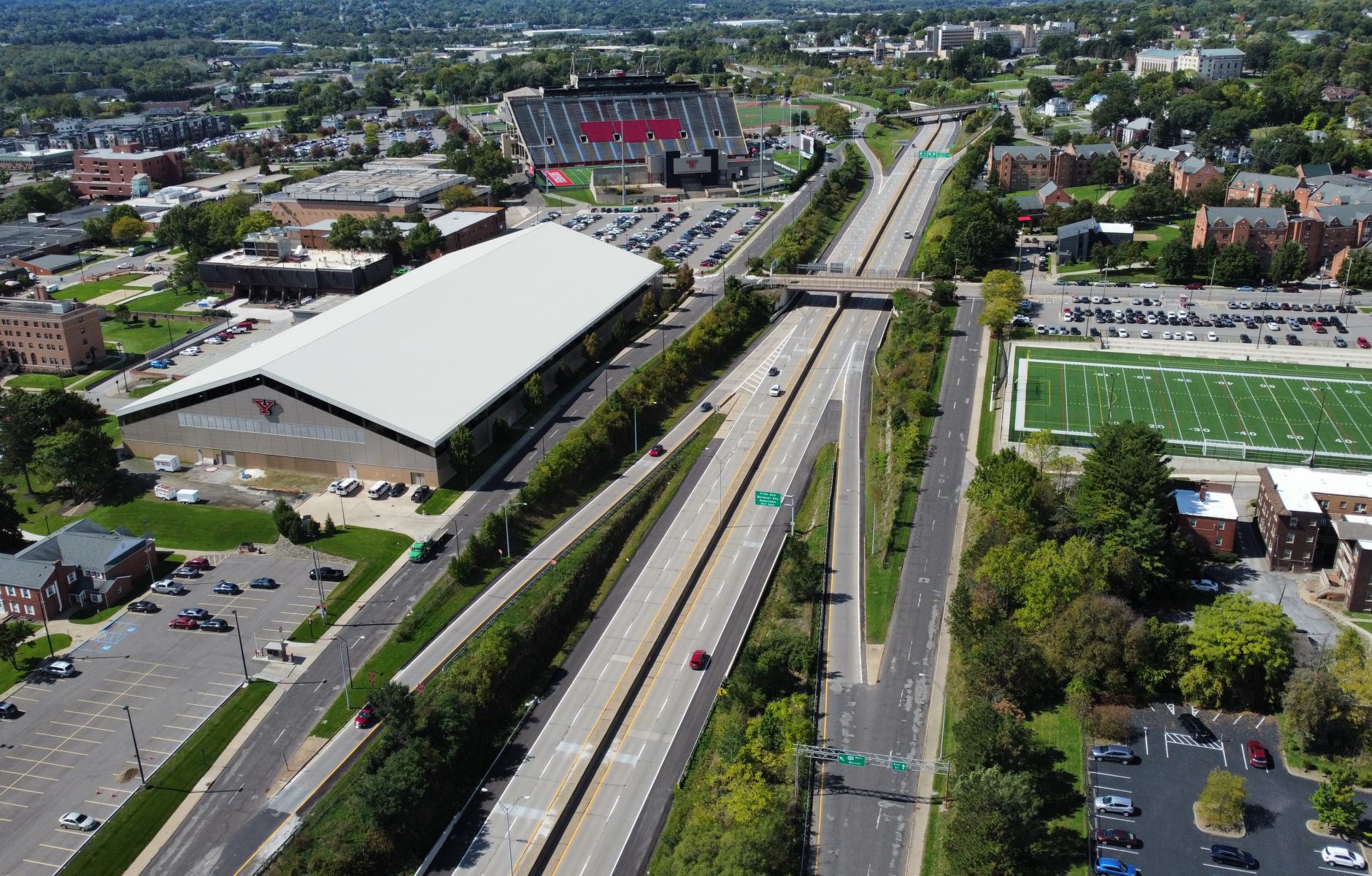
What does government support for highway removal look like?
Freeways Without Futures highlights the efforts of local campaign organizers and activists seeking to revitalize their communities by dismantling the city highways that burden them with the significant health hazards of vehicle exhaust, a loss of local businesses and services, and streets that are hostile to pedestrians.
Now, city and state officials are also recognizing the importance of replacing aging highways that damage communities with assets like city streets, housing, and green space. This is further supported by the federal government’s acknowledgement of historic harms with financing through the federal Reconnecting Communities program. While the 2023 report features several highways that are getting support from the federal government, the highways featured in this article have also received government support on a more local level.
Interstate 787—Albany, NY
Constructed during the urban renewal efforts in the 1960’s, Interstate 787 was part of the larger Empire State Plaza project which demolished 98 acres of thriving neighborhoods, homes, and businesses in the City of Albany. Albany Riverfront Collaborative (ARC) was created as a grassroots organization to conceive of a city without I-787 while centering the needs of the current communities as the process moves forward.
In 2022, a $5 million formal commitment funding the New York State Department of Transportation (NYSDOT) to conduct a feasibility study was announced with DOT issuing the associated RFP in August 2022. The NYSDOT feasibility study may also illuminate other solutions to bring people into the city without needing to bring in as many cars.
Even more, calls for I-787’s removal overlap with the cleanup and restoration of the Hudson River which more people are utilizing through boating and kayaking and on the shore through walking, bike riding, and fishing.
The commitment to fund the feasibility study for highway removal in New York’s capital shows how far the state has come from being the home to Robert Moses. With successful removals in Rochester and New York City and more in progress in Syracuse and Buffalo, the state government in New York is working to heal the divisions created when these roads tore apart the communities by reconnecting the historically underinvested neighborhoods and improving economic vitality.
State Highway 55—Minneapolis, MN
Construction of the state highway 55 was approved in 1933 and by the end of the 1930’s, hundreds of businesses and homes along the route were completely destroyed and replaced with a wide highway cutting through the neighborhoods. Today, the highway divides the Near North community and presents a safety risk with its 6 plus lanes of vehicle traffic.
The Bring Back 6th campaign launched in November 2021 to address commitments by Hennepin County and the City of Minneapolis to incorporate safety improvements as part of a light rail extension project that has since been rerouted. However, the work done by the campaign has led to a phased vision developed in close partnership with neighborhood stakeholders that incorporates ideas from the community and the promised safety improvements that were made and not kept by the City of Minneapolis and Hennepin County.
In Fall of 2022, MnDOT installed some temporary safety improvements and has committed to making additional safety and multi-modal improvements in 2023. Restoring this boulevard will reduce ongoing maintenance costs and produce benefits that far exceed the increased construction cost associated with highway removal.
While there has now been funding and support from the City and state government for these safety improvements, it was the hard work of local campaigners to hold stakeholders accountable in order to see the community’s vision start to be realized. Outreach to communities and centering local residents in discussions is vital to equitable outcomes in highway removal but it is important to remember that the next step must be action.
US Route 244—Youngstown, OH
In the 1960’s, the Madison Avenue Expressway was built as a trenched limited access freeway that created an imposing physical barrier, especially for pedestrians. The construction split the original neighborhood in half which severed community connectivity and led the area’s population to decline almost immediately as a large number of homes were demolished.
The potential of highway removal was first identified in a 2020 study by the Eastgate Regional Council of Governments Belmont Avenue Corridor Plan. The Belmont Avenue Corridor Plan hosted two conversational public engagement opportunities where residents, business owners, and stakeholders from the project area were able to convey their concerns and ideas for improvement.
The Eastgate Regional Council of Governments is in the process of exploring the feasibility of the removal of the Madison Avenue Expressway by building a coalition within the community, the City of Youngstown, and the Ohio Department of Transportation. These stakeholders all support the removal of the Madison Avenue Expressway at this location and Eastgate applied for a Reconnecting Communities planning grant to refine the conceptual alternative.
Highway removal can benefit cities, and sometimes it is government agencies themselves that start the conversation. Building coalitions within government and the community can help these long-term and potentially expensive projects build and maintain momentum throughout the process.
To learn more about these and other highways in Freeways Without Futures 2023, download the report here.




